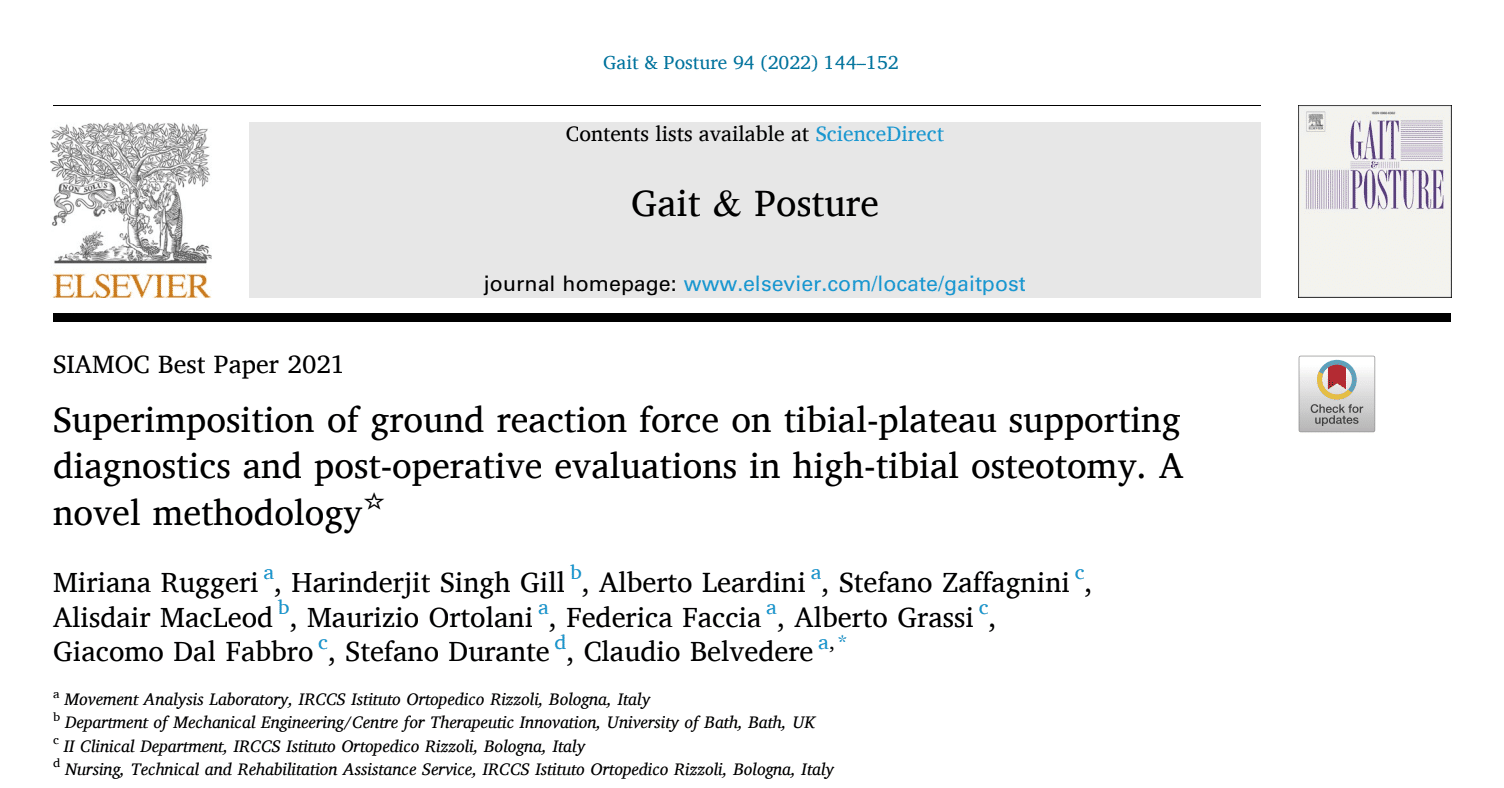The objective of this study was to develop a methodology that provides a patient-specific representation of knee mechanical conditions during locomotion by merging gait analysis, ground reaction force, and computer tomography. The aim was to determine if High Tibial Osteotomy (HTO) effectively restores proper condylar load distribution by creating a lateralized pattern of ground reaction force with respect to the tibial plateau.
This then prevents medial knee condylar hyper-compression and osteoarthritis. Four patients selected for HTO received clinical, radiological, and instrumental examinations pre- and post-operatively. Gait analysis, combined with two force platforms and a 9-camera motion-capture system, was performed during level walking and more demanding motor tasks.
Additional skin markers were placed around the tibial-plateau rim, and weight-bearing computer tomography scans of the knee were collected while still wearing these markers. The registration procedure was successfully executed, and ground reaction force intersection paths were found to be much closer to the knee centre post-operatively, as expected after HTO. This methodology offers personalised quantification of the original mechanical misalignment and the effect of surgical correction, which could enhance diagnostics and planning of HTO as well as other knee treatments.
A fully personalised combination of Gait Analysis, including Ground Reaction Force and patient-specific knee joint morphology has not yet been reported. This can provide valuable biomechanical insight in normal and pathological conditions. Abnormal knee varus results in medial knee condylar hyper-compression and osteoarthritis, which can be prevented by restoring proper condylar load distribution with using the TOKA high tibial osteotomy solution.
Research question:
This study was aimed at reporting on an original methodology, merging GA, GRF and Computer-Tomography (CT) to depict a patient-specific representation of the knee mechanical condition during locomotion. It was hypothesised that HTO results in a lateralized pattern of GRF with respect to the tibial plateau. Methods:
Four patients selected for HTO received clinical, radiological and instrumental examinations, pre- and post-operatively at 6-month follow-up. GA was performed during level walking and more demanding motor tasks using a 9-camera motion-capture system, combined with two force platforms, and an established protocol. Additional skin markers were positioned around the tibial-plateau rim. Weight-bearing CT scans of the knee were collected while still wearing these markers. Proximal tibial and marker morphological models were reconstructed. The markers from CT reconstruction were then registered to the corresponding trajectories as tracked by GA data. Resulting registration matrices were used to report GRF vectors on the plane best matching the tibial-plateau model and the intersection paths were calculated.
Results and significance:
The registration procedure was successfully executed, with a max registration error of about 3 mm. GRF intersection paths were found medially to the tibial plateau pre-op, and lateralized post-op, thus much closer to the knee centre, as expected after HTO. The exploitation of the present methodology offers personalised quantification of the original mechanical misalignment and of the effect of surgical correction which could enhance diagnostics and planning of HTO as well as other knee treatments.

